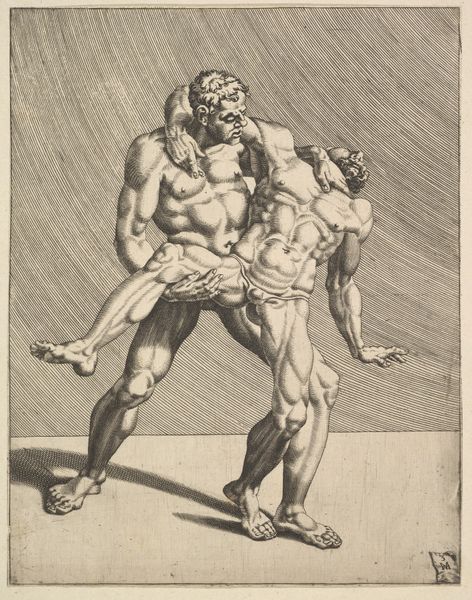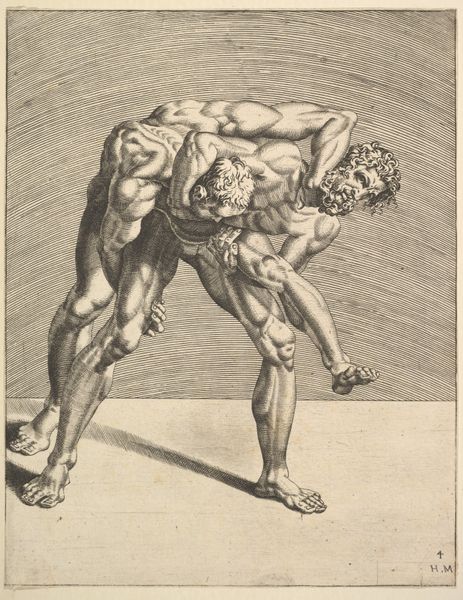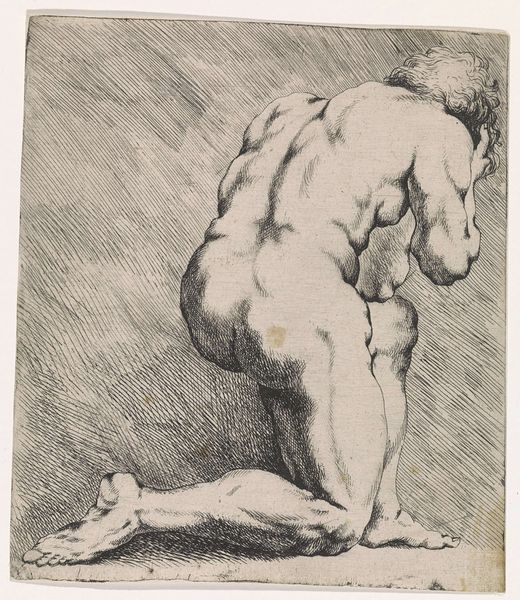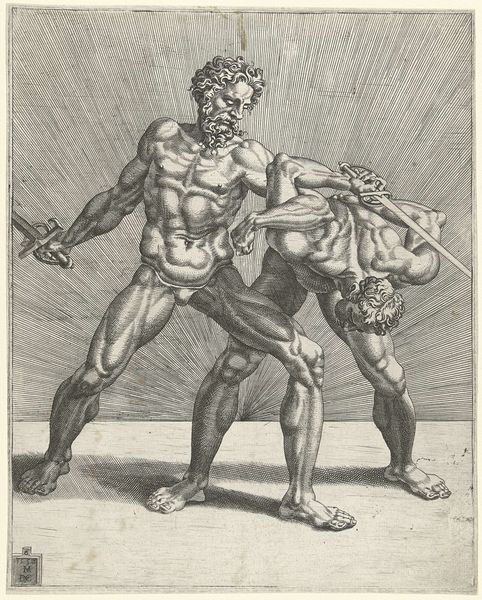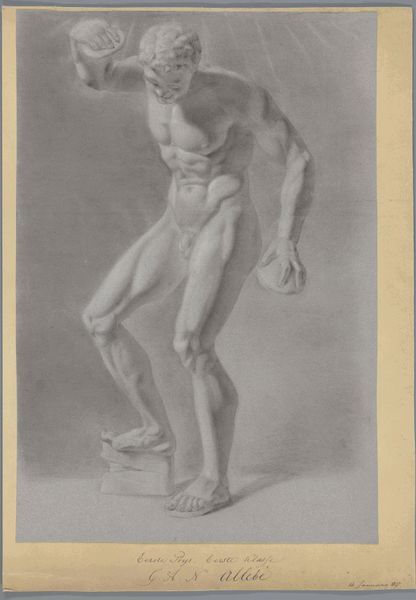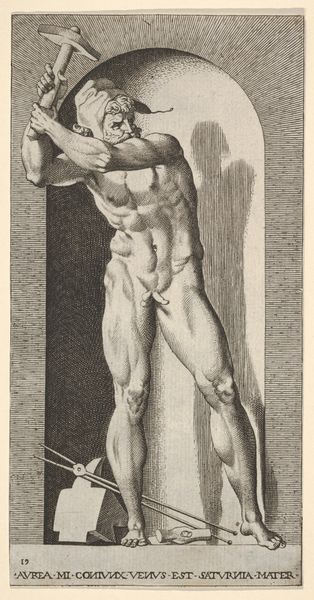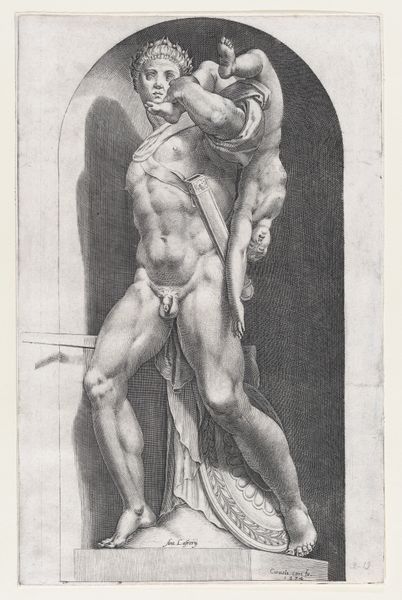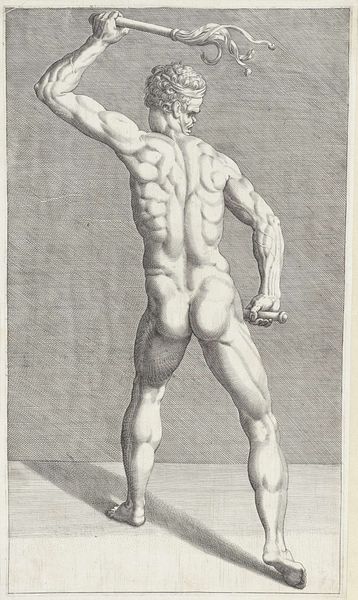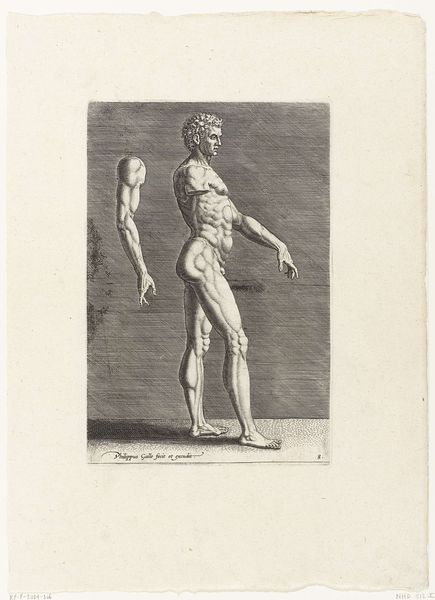
engraving
#
figuration
#
form
#
11_renaissance
#
line
#
history-painting
#
italian-renaissance
#
engraving
Dimensions: height 248 mm, width 197 mm
Copyright: Rijks Museum: Open Domain
Curator: Welcome. Today, we are observing Dirck Volckertsz Coornhert’s 1552 engraving, “Two Wrestlers," currently housed at the Rijksmuseum. Editor: The stark contrast immediately grabs your attention. It's like a high-relief sculpture rendered in lines, filled with dynamic tension. Curator: Coornhert’s print arrives amidst a fascinating cultural moment. Wrestling, alongside other athletic pursuits, held significance beyond mere sport, embodying humanist ideals of physical and moral strength, virtues that powerful Renaissance figures wished to convey. Editor: Yes, I see how the rippling muscles and exaggerated poses convey idealized form rather than practical wrestling technique. Note how Coornhert uses cross-hatching to define form, almost creating a tactile sense of volume within the flat plane. Curator: Indeed. The print disseminates ideals about male physique and comportment, linked to classical notions revived by the Italian Renaissance. But consider too, prints democratized such images. No longer confined to elite collections, the masses had access to these visions of power. Editor: Democratization notwithstanding, the image still participates in constructing ideals. The background, for instance –– simple parallel lines –– it's entirely divorced from reality, putting the men on a conceptual stage for our examination. The focus rests entirely on anatomy and dynamic movement, stripped bare. Curator: That reduction is partly the engraving’s power; by reducing the background and isolating figures, it allowed widespread reproduction. Beyond this specific artwork, engraving was also very important during religious conflict; this form could provide narratives. The simplification facilitated dissemination when there was religious change and instability. Editor: What interests me most is Coornhert's emphasis on line as form. The whole composition rests on the power of carefully laid marks, highlighting anatomical understanding but almost edging into abstraction with its unwavering uniformity. Curator: Ultimately, this print reflects not just a snapshot of athletic prowess, but also speaks to social, intellectual and artistic values in Coornhert's era, values we continue to reinterpret centuries later. Editor: A testament to how form and content can blend and evolve across the ages, a captivating tension between the concrete and the ideal, perfectly captured in the stark contrasts of engraving.
Comments
No comments
Be the first to comment and join the conversation on the ultimate creative platform.
